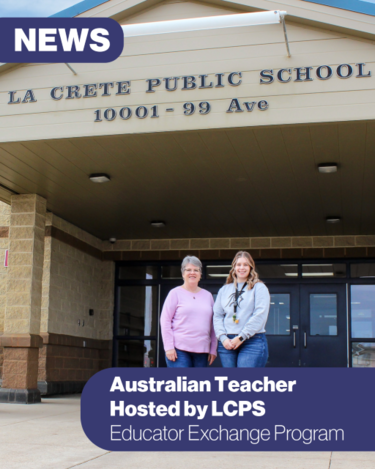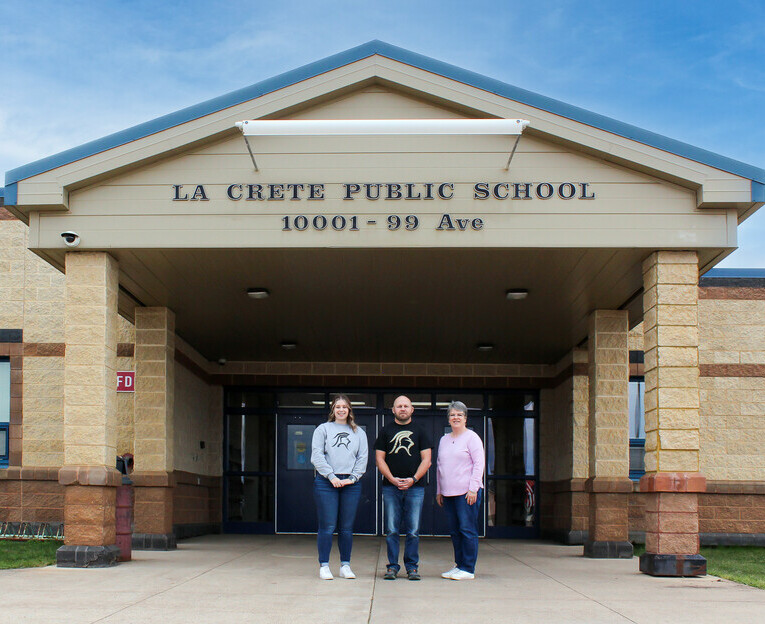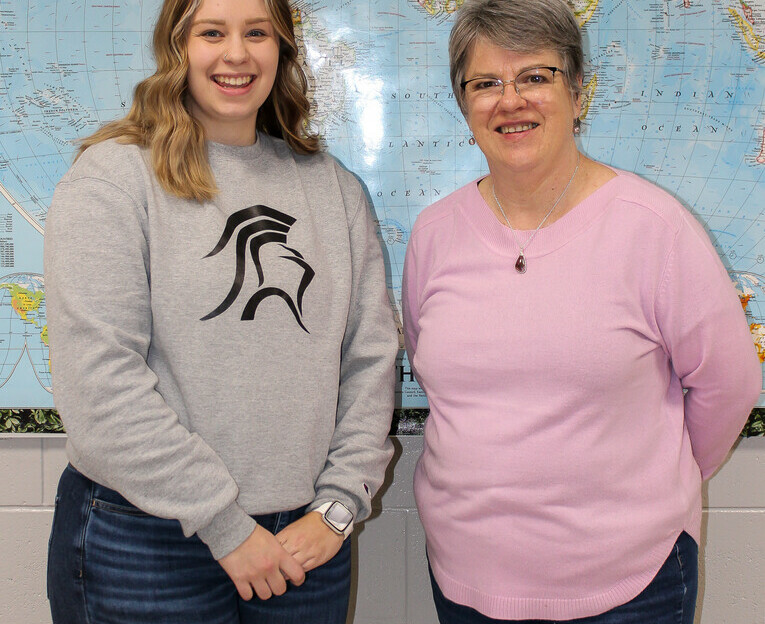Australian Teacher Hosted by La Crete Public School

Earlier this month La Crete Public School (LCPS) had the privilege of hosting Zinta Ozolins, an experienced teacher from Victor Harbor High School in South Australia.
Prior to Zinta’s arrival, Grade 10 teacher Ashley Friesen spent ten days this past July in Victor Harbor, shadowing Zinta at her local high school. This amazing opportunity was made possible through the ATA Educator Exchange Program and their new Short-Term Exchange – a one-to-two-week program where educators stay with and go to their host’s school and then in turn host their counterpart in their own Alberta school.
Ashley, born and raised in La Crete and an LCPS graduate herself, is now in her fourth year of teaching and was thrilled to be able to participate in the exchange program. No stranger to international travel, Ashley spent some time in South Korea in 2022 and took the opportunity to extend her trip in Australia – travelling through the area taking in the gorgeous coastal scenery and visiting locations with a family connection. “The most memorable part of my visit was driving the Great Ocean Road between Adelaide and Melbourne. It was a beautiful drive, especially in comparison to our northern Alberta scenery. Along the road we made various stops including a cave which was really cool. We visited a wildlife park and I got to feed kangaroos and koalas. Australia is a massive country, and I appreciated the opportunity to see as much of it as I did!”
Zinta began teaching in 1984 and has spent a significant amount of time traveling internationally, bringing her authentic lived experiences and photographs back to her students to show them how people everywhere are the same and that we’re all part of a global community. This past spring, she spent some time at Victor Harbor’s sister school in Lombok, Indonesia – most high schools in Australia have an overseas connection with another high school. After arriving in Edmonton, Zinta was surprised at how flat and unchanging the landscape was on her drive north through the boreal forest, a contrast to the Australian landscape which changes every 100 km or so.
When asked about her time spent at LCPS Zinta said, “The time I spent with the [Grade] 7’s was wonderful. They were so attentive and asked a lot of questions. My time with the [Grade] 10 students was also interesting as they discussed global studies. I felt welcomed by the students and staff across the board.”
Despite a requirement of five years teaching experience, Ashley decided to take a chance and apply for the Exchange Program anyway. With the full support of Superintendent Mike McMann and LCPS Principal Gregg McNeil, Ashley submitted her application last March and was matched with Zinta in June. Principal McNeil was eager to support Ashley’s application saying, “I believe learning from others is always a beneficial experience. Learning how others live, work, and learn is valuable to understanding our world, developing broader perspectives, and growing as an individual. Ashley has brought back new learnings and understandings, as well as enthusiasm for teaching and appreciation that learning is universal – a common bond of humanity. Having Zinta in our building has given our students the chance to hear from and discuss a different culture and see that we have a lot in common.”
Canada and Australia share similar curriculums and content approaches; however, school days and courses are structured differently. Our school year runs from September to June with approximately 8 weeks off through the summer months. The Australian school year runs from the end of January to the week before Christmas in December. Students are in classes for 10 week terms with 2 week breaks in April, July, and October and 5-6 weeks off in Dec/Jan – summer months for the southern hemisphere.
Fort Vermilion School Division high schools operate on a quad system, students have fewer subjects (2-3 per day), but courses are compressed into a shorter timeframe allowing students to focus intensely on one or two core subjects at a time. Each lesson is typically 2.5 hours long and includes time spent building relationships as well as teaching concepts. High schools generally consist of a single building and students move between indoor classrooms a couple of times a day with a different teacher for each subject. Our school days begin at 8:40 AM with recess and a lunch break during the day and ends at 2:50 PM, extracurricular activities are scheduled at many FVSD schools following the school day.
Victor Harbor High School students have six lessons per day, each lesson is about 50 minutes long, and the school day runs from 8:50 AM to 3:15 PM with a 45-minute lunch break in addition to a morning recess break. Interestingly, the campus is composed of several buildings that students move between for classes with activities that we would typically consider extracurricular, incorporated into the school day. Instruction is also structured slightly differently with less emphasis on a “stand and deliver” model and more emphasis on tasks and self-directed learning.
Australian schools have stepped away from textbooks and focus more on creating a curriculum that caters to individual needs, with each student having access to their own curriculum. For example, teachers will create individualized student ‘textbooks’ using digital tools such as Microsoft OneNote with course materials and assignments based on each student’s specific learning abilities/needs, allowing teachers to provide multiple variations of a course within a single class. Generally, a class will begin with 10-15 minutes of instruction then students complete assigned tasks and worksheets, each on their own device and not necessarily working on the same thing as their classmates. An “I do, we do, you do” style of teaching is often employed. Overnight camps for junior high are also common – students focus on team building, leadership, resilience, and personal growth.
Culturally, a couple of differences between the education systems noted by both Ashley and Zinta were the lack of a daily national anthem in Australian schools and the fact that we don’t wear school uniforms in our Division. Every Australian student is required to wear a school uniform, reflecting the egalitarian structure of the country, and helping to instill a sense of identity and belonging to their community.
In terms of similarities, both education systems place high value on standardized assessments and interventions based on individual need.
Just as Alberta Education has Provincial Achievement Tests and Diploma Exams, Australia has a National Assessment Program which provides a means for government, education authorities, and schools to determine whether students are meeting educational outcomes. At the state level, evidence-based data is used to inform schools where support is needed and is compared to previous years to track growth and achievement.
Although differences between the two countries were expected, both educators commented on the similarities among students and how travelling to faraway places has served to highlight just how alike people are across the world. Ashley shared, “The more I travel, the more I learn, the more I can bring to teaching – especially in an isolated community like La Crete.” Zinta was impressed by the enthusiasm and commitment of the younger staff at LCPS, commenting, “Seeing something new can reignite that fire, it’s a good reminder to mix it up and use a range of resources.” She was slightly amused however, at the amount of time she spent explaining that Australia is NOT dominated by poisonous and dangerous animals to the degree that media has made it out to be. She also confirmed that they do not ride kangaroos as one curious LCPS student wanted to know.






















